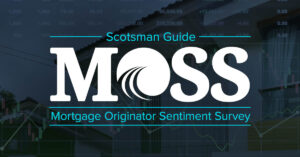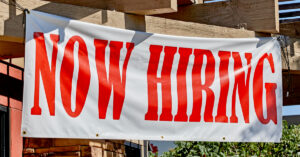With the easing of COVID-19 restrictions and spread of vaccine coverage has come the seemingly inevitable call from many employers and managers for the return to in-office work.
Indeed, according to the Back to Work Barometer maintained by property security firm Kastle Systems and gleaned from the company’s fob and keycard access data, office occupancy across 10 of the U.S. cities with the largest office worker populations has been steadily on the rise. After incremental increases of less than a percentage point through the three weeks prior, 10-city average occupancy jumped 1.6% week over week during the seven days ending Oct. 12, growing to 49.0%.
Occupancy is trending upward both in cities where most have already returned as well as in metros where the majority remains working hybrid or remote. In Austin, office occupancy was up 1.2% week over week during the above timeframe, rising to 64.3%, highest among the markets that comprise that 10-city average. In metro New York, occupancy during the seven days ending Oct. 12 leapt to 47.8%, up 4.0%, at least twice as much as every other city in the average.
But while employees are returning back to the office, there’s a clear gulf in opinion forming when it comes to the hybrid work conversation, and it’s forming across a generational divide, according to JLL.
Per the company’s Workforce Preferences Barometer, the appetites of millennials and Gen Zers for the hybrid model are easily much stronger than their senior colleagues. Thirty-seven percent of personnel over 50 years old are likely to be found in the office five days a week, per JLL’s data, compared to only 20% of those under 35.
“We are seeing a major generational clash, creating friction between those who desire choice and flexibility and those who are detractors of hybrid work,” said Flore Pradere, research director in JLL’s Global Work Dynamics team. “It’s interesting to note that the most senior age groups are split between advocates and detractors of remote work, making it a challenge for the latter to support teams in a work routine they’ve not embraced themselves.”
It’s interesting to note that the question of in-office vs. hybrid/remote is one with a big impact not just on companies in the U.S., but all over the globe. Pradere said that companies based in countries with more hierarchical approaches to management, like Japan and France, have thus far set stricter oexpectations when it comes to returning to the office, while countries with more prominent worker empowerment bases like the U.S., United Kingdom and Canada have been more flexible.
“It’s not surprising that some executives who have spent almost an entire career in the office, are struggling to adapt their management techniques, reverting to what they know,” added Sue Asprey Price, CEO EMEA (Europe, Middle East and Asia) Work Dynamics. “But developing a culture of trust and achieving a healthy balance will be vital as it looks like hybrid is here to stay.”
Stateside, hybrid and remote work opportunities could be valuable tools in expanding the traditional talent pool, with research showing that women, parents and people of color are more likely to embrace hybrid work. But at the same time, JLL experts note that this brings up additional challenges, like the possibility of denting diversity in the physical workplace. And other data shows that while millennial and Gen Z employees welcome hybrid models, younger workers and new hires also prefer to immerse themselves in their workplaces to learn by osmosis, something harder to accomplish if colleagues in middle management are working from home.
“Equipping staff with the right technology and tools to support flexible work is critical,” Asprey Price said, “but so is spending regular time together in the physical workplace.”
“Creating deeper connections, fostering inclusion and diversity of thought, passing on knowledge to the leaders of tomorrow, all this is vital for individual career development and thriving businesses, but harder to do remotely.”
“Employers must be transparent in their expectations of staff at all levels, setting clear goals and KPIs that link individual performance and contribution, to the overall productivity of both teams and the wider organization,” Asprey Price added.






